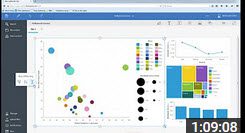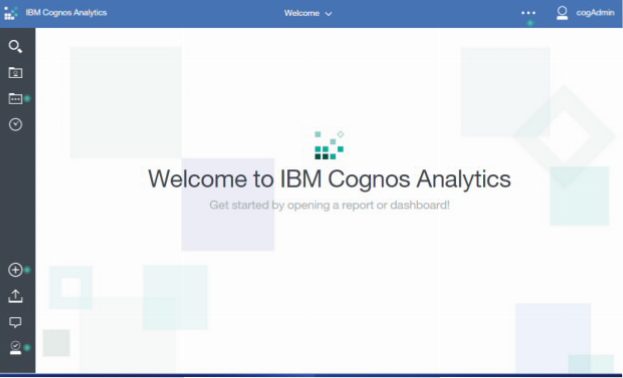Cognos Analytics and client tools can be installed silently (sometimes called unattended installation). Scripts can be leveraged to do so. In this post, we provide the steps and tools you will need to install the Application Tier, Content Tier, Gateway, Framework Manager, and Transformer in a single server Windows environment.
Table of contents
The benefit of silent installations in Cognos Analytics
Why might you need (or want) to perform a silent installation for Cognos Analytics? Because silent installations are faster and more convenient. Silent installation does not require manual inputs and clicks during installation so there is less chance for human error. The software, response files, and scripts can be copied from server to server to guarantee the installations are the same in a dev, test, and prod environment for example, or even in a disaster recovery situation.
Create Directories
Firstly, you must create directories for the response files, software, and installation. We’ve set up the environment in this example with the following directories:

Download Response Files and Scripts
Download the following response files to the C:\CognosData\ResponseFiles directory:

Then, download the following command files to the C:\CognosData\Software directory:
- CAServerInstall.cmd
- CAClientInstall.cmd
- TransformerInstall.cmd
Note: Download and unzip all required software to this location. You do not need to unzip the ca_srv…zip and ca_client…zip, because they are being called via the ca_instl…exe.

Download the Response Files and Scripts here.
This should save you the effort of going through the installation guides and creating the response files manually. Simply update the references and properties for your environment setup and requirements accordingly.
CA Server Installation
Firstly, let’s start with Cognos Analytics Server Installation, which includes the Application Tier, Content Tier, and Gateway.
Review the properties in the CAServerResponseFile.properties file. Below, we highlight areas to concentrate on. For example: components being installed, software directory and name being called, software installation directory, start menu folder name for the program, and users who have access to the program folder. Modify any of the necessary values.

Running the install
Secondly, let’s review the script that will install the software. It’s CAServerInstall.cmd. Again, be sure to update the directories or names if you’ve referred to anything differently than this example or are running a different version. It contains the executable file, the repository file path and name, the setting for a silent mode install, and the response file path and name.
We provided a link and screenshot at the conclusion of this article with descriptions and examples of the command line arguments.

Run a Command Prompt as Administrator and navigate to the directory where the CAServerInstall.cmd file is located. In this example, type ‘cd c:\CognosData\Software’ in the command prompt. At that directory, type the file name – ‘CAServerInstall.cmd’. You may want to open Task Manager and navigate to the Details tab. There will be a process running for the ca_instl…exe file while it is installing.

In the command window, you’ll see the syntax of the script once it begins executing.

You can verify the components installed by reviewing the installation directory, which is C:\CognosInstall\ibm\cognos\analytics. It will contain many files and folders. The cmplst.txt file can be found in the same directory. Verify that the selected_features property includes the options in the CAServerResponseFile.properties file.

In addition, you should see the IBM Cognos Analytics program in the list from the Start menu.

If this installation is complete, then you can move on to the client portion of the installation.
CA Client Installation (Framework Manager)
The process for the installation of Framework Manager is similar to the server components. It involves the ca_instl…exe file, but calls the ca_client…zip repository file, and a specific response file for client tools.
Highlighted below are areas to review in the CAClientResponseFile.properties file in the event you require any modifications.

The script is CAClientInstall.cmd. It contains the executable file, the repository file path and name, the setting for a silent mode install, and the response file path and name.

In the Command Prompt, run the script ‘CAClientInstall.cmd’. Keep an eye on the Details tab in Task Manager to verify the ca_instl…exe file is running.

In the command window, you’ll see the syntax of the script once it begins executing.

You can verify Framework Manager installed by reviewing the installation directory for files and folders, which is C:\CognosInstall\ibm\cognos\fm. You can find the cmplst.txt file in the directory. Verify that the selected_features property is ‘FTR_FM’ (Framework Manager).

From the Start menu, verify you see the IBM Cognos Framework Manager program.

Lastly, let’s install Transformer.
Transformer Installation
Highlighted below are areas to review in the TransformerResponse.ats file in the event you require any modifications.

The script is TransformerInstall.cmd. It contains the executable file, the setting for a silent mode install, and the response file path and name. Because Transformer does not have an installer file, it runs the issetup.exe file and does not contain a reference for a repository path and name.

In the Command Prompt, run the script ‘TransformerInstall.cmd’.

In the command window, you’ll see the syntax of the script once it begins executing.

On the taskbar, you will see the installer detailing the progress of the installation compared to the total components. Once the transfer is complete, the installer will close on the taskbar.

You can verify Transformer is installed by reviewing the installation directory for files and folders, which is C:\CognosInstall\ibm\cognos\transformer. You can find and review the cmplst.txt file in the directory.

From the Start menu, verify you see the IBM Cognos Transformer program.

The software is installed and ready to be configured!
Additional Information:
For additional information regarding the command line arguments visit: Installer and Uninstaller Command-Line Arguments (revenera.com).

Conclusion
In this post, we were able to quickly install the Cognos Analytics Server components: Application Tier, Content Tier, and Gateway. We did this by setting up a custom response file and a script that performed a silent installation based on the properties in the custom response file. After that, we installed the Cognos Analytics Client component: Framework Manager by setting up a client response file and a script that performed a silent installation based on the properties in the client response file. Lastly, we installed Transformer by setting up the response file from the Transformer installation files and a script that performed a silent installation based on the properties in the Transformer response file.




